How to Volunteer in Rural Kerala and Make an Impact

When most people think of Kerala, they imagine houseboats on backwaters or tea gardens on misty hills. But Kerala’s real charm lies in its villages — where culture, traditions, and warm hospitality create unforgettable experiences. Volunteering in rural Kerala not only enriches your trip but also makes a meaningful difference in local lives. This guide will help you make your Kerala itinerary memorable & meaningful for life. 1. Why to Choose Rural Kerala for Volunteering? Volunteering in Kerala’s rural areas gives visitors an opportunity to experience the state apart from experiencing populated tourist locations. The villages offer authentic culture & traditions, friendly hospitality by locals, and untold tales. Volunteering gives you authentic village experiences by immersing you in daily life, unlike traditional Kerala packages. There are multiple ways to contribute—teaching children, supporting women’s groups, or helping in eco-projects. The community is strengthened by each and every action, no matter how big or small it is. Pro Tip: Before you enroll, it is advised to better look for reputable Kerala tour companies or regional NGOs that run such volunteer events. 2. Top Volunteering Opportunities in Rural Kerala (Teaching, Farming, Healthcare & More) There are numerous volunteer opportunities available in Kerala. Amongst all, the most significant opportunities are as follows: Teaching Programs: To support educational initiatives, volunteering to teach computer skills, English or any other subjects in schools is one way to volunteer for the right cause. Sustainable Farming: Encourage organic & sustainable farming projects over inorganic farming in the hill stations of Kerala. Support for Healthcare: To volunteer for the healthcare department, reach out to remote clinics. Help out local medical staff . Eco-Tourism Projects: Support sustainable tourism activities. Encourage eco-friendly responsible travel & sustainable tourism in villages. These kinds of opportunities, which combine leisure and purpose, are trip-worthy to be included in your customized Kerala travel packages. Pro Tip: Select projects as per your preferred skills. There are a lot of activities to be indulged in like from Teaching, farming, to healthcare—choose where you can truly add real value. 3. Best Places to Volunteer in Kerala: Wayanad, Alleppey, Munnar & Kumarakom Your preferred interests will determine the location for volunteering. Each and every region has something special to offer: Wayanad: It is known for its sustainable farming initiatives and for tribal communities that support sustainability.. Alleppey: It defines the combination of ecotourism run by the locals and beautiful backwaters. Munnar: Volunteer on tea plantations and organic farms in the hills. Kumarakom: This area is home to eco-friendly initiatives and bird sanctuaries. Each destination adds depth to your Kerala travel guide, making it more meaningful than a typical Kerala road trip. It has something or the other to experience & learn while volunteering at the same time. Pro Tip: Speak with your Kerala tour planner to mix volunteering with sightseeing for a balanced experience. 4. How to Plan Your Volunteer Trip To ensure a rewarding volunteer experience ,careful examination & better planning is what you all need .Here are some of the key steps that will add value to your volunteer trip, if followed: Decide your duration—whether you want to go for short-term or long-term. To make travel plans to Kerala, get in touch with travel agencies. To combine volunteering with travel, pick trustworthy & informative Kerala tour companies. Mentally get ready for simple authentic living and cultural differences. A reputable Kerala planner can create a fulfilling itinerary that incorporates impact exploration. Pro Tip: Keep a journal when you travel. Writing down your experiences fosters reflection and strengthens bonds with others 5. Unique Experiences To Experience While Volunteering In Kerala, volunteering is more about the reward that is to gain than it is to give back. Anticipate more on following activities that will add value to your volunteering tour : Take part in customary celebrations. During homestays, discover Keralan cuisine. Learn about Ayurvedic methods in rural areas. Hike to undiscovered waterfalls accompanied by locals. These immersive experiences turn your trip into lifelong unforgettable memories, in contrast to generic Kerala family tours or vacation packages with no volunteering . Pro Tip: Carry a travel journal. Documenting your experiences will deepen your connection and help you reflect all the memories to re-live the moment. 6. Balancing Travel and Volunteering altogether Many tourists are curious about how to combine volunteering and leisure time for a better trip. Integration is crucial. By combining volunteer work with touring Kerala’s hill stations, backwaters, and cultural sites ,you can make a significant contribution without missing out on famous locations. Volunteering days can be added to Kerala vacation packages. This guarantees that your Kerala vacation package combines enjoyment and purpose along with a lot of learning thoroughly. Pro Tip: Take advantage of the weekends to explore the destination. For the ideal balance, commit to volunteering during the week days. FAQs Q1. Does volunteering in Kerala require any prior experience? No. Beginners are welcome in many projects. More important than skill is enthusiasm and transparency. Q2. Is it possible to combine volunteering with a honeymoon tour package to Kerala? Indeed. It is definitely possible to add personalized volunteering along with a honeymoon tour package. Q3. How do I find reliable travel agents for Kerala trips for volunteering? Seek out authorized Kerala tour companies that collaborate with neighborhood associations or non-profits communities. Q4. Is volunteering in rural Kerala safe for solo travelers? Yes. Villages in Kerala are known for their hospitality and safety. Just stay connected with your Kerala tour guide. Q5. Can a quick Kerala vacation package include volunteering? Indeed. Volunteering for even two or three days can make your Kerala vacation impactful & memorable. Final Thoughts Your journey becomes more than just a vacation when you volunteer in rural Kerala. It’s a worthwhile opportunity to change lives, embrace customs, and come back with meaningful tales. Whether you are traveling by road, taking a family vacation, or using a Kerala tour operator, volunteering adds value to your trip that will last. If you want your Kerala volunteer journey filled
Best Time to Visit Vietnam for Travelers in 2025

Travelling to Vietnam is an adventurous and daunting experience. Through its smoky mountainous north and its crowded cities, Vietnam has a wide variety of activities and attractions suitable for any kind of traveler. But before you dive into the details of your Vietnam travel itinerary, there’s one essential question to answer first: When is the best time to visit Vietnam in 2025? The climate in Vietnam is special in the sense that the nation extends over 1,000 miles in length between the north and the south. This forms three different climatic zones, i.e., the most auspicious seasons to visit, depending on the part of the land you are sightseeing. A properly organised trip planner to Vietnam will make your trip as fruitful as possible because they will match your activities with the best seasons. In this Vietnamese travel guide, we’ll explore seasonal highlights, regional variations, festivals, and tips to make your Vietnam trip planning smoother. Whether you’re crafting a Vietnam honeymoon itinerary, a family vacation plan, or a solo adventure, this guide has you covered. Understand the Vietnam Climate Before finalizing your Vietnam travel itinerary, it’s important to understand how weather patterns vary across the country. The regions of Vietnam are three: Northern Vietnam (Hanoi, Sapa, Ha Long Bay): There are four seasons: spring, summer, autumn, and winter. Winters (December to February) can be cold, particularly in mountainous places such as Sapa. Summers (May- August) are hot, humid, and sometimes have heavy rains. The Central Vietnam (Da Nang, Hoi An, Hue): Warm weather throughout the year tropical climate. Likely to typhoons and downpours during September and November. Southern Vietnam (Ho Chi Minh City, Mekong Delta, Phu Quoc): Warm and humid year-round. Separated into the dry season (November to April) and the rainy season (May to October). By aligning your Vietnam holiday guide with these climate zones, you can avoid weather-related disruptions while enjoying the country at its best. Best Time to Visit Northern Vietnam Northern Vietnam is a natural and cultural treasure trove, having it all, cities with their colored lights and mountains covered with mist. Ideal Months: October -April. These months are cool and comfortable, thus an ideal time to sightsee and do other activities outdoors. The months of October and November have clear skies and would be the best moments to be taken around Ha Long Bay or traveling in Hanoi. During winter months (December to February), there is a different kind of appeal, and in Sapa, it may be misty and occasionally there is a snowfall in the higher places. The month of spring (March to April) is lovely as flowers begin to bloom and there are celebrations. Must-Do Activities: Visiting the ancient streets and cuisine of Hanoi. Take a romantic Ha Long Bay cruise, perfect for couples on a Vietnam honeymoon itinerary. Hike across the Sapa terraced rice fields to have stunning scenery. Pro Tip: Tet, the Lunar New Year in Vietnam, generally occurs in the late month of January or February. It is a spectacular cultural adventure, and transportation and hotels are already booked several months beforehand, so reserve early. Central Vietnam Best Times to Visit The place is a country that boasts of cultural landmarks, historic cities, and beautiful beaches. Most suitable Months: February to August. It is also the time of year when the weather in the country is dry and sunny, and therefore, beach vacations and outdoor exploration are perfect. This would also be a perfect opportunity to explore Hoi An Ancient Town and the imperial monuments of Hue without fear of getting drenched by rain. Hoi An Lantern Festival, conducted every month, is particularly magical during clear weather. Must-Do Activities: Take a break on immaculate beaches such as My Khe Beach in Da Nang or An Bang Beach in Hoi An. Stroll in the by-lanes of Hoi An, illuminated with lanterns. Hue, the royal city of Vietnam, with the Imperial City and royal tombs. Visit My Son Sanctuary, which is also a UNESCO World Heritage site displaying the ancient Cham ruins. Travel Tip: Central Vietnam is prone to typhoons and flooding, especially in September to November, and so should not be visited at all. Best Time to Visit Southern Vietnam Southern Vietnam is a combination of bustling city life and all-natural immersion. Best Months: November-April. These are dry months in the year, and the weather is sunny, ideal in case people need to travel to Ho Chi Minh City, have boat tours in the Mekong Delta, or go to the beaches at Phu Quoc Island. Must-Do Activities: Tour the Tan Cu Chi Tunnels and gain knowledge about the history of the Vietnam War. Explore the floating markets of the Mekong Delta to have a glimpse of the local life. It is also about unwinding on the pristine white-sanded beaches of Phu Quoc and having a taste of seafood. Travel Tip: The rainy season lasts between May and October, although showers are normally brief and appear in the late afternoon thus they will not get your plans spoiled entirely. Month-by-Month Guide for 2025 Here’s a quick breakdown to help with your Vietnam travel planner: January: The Northern part is cool and dry, and festal Tet celebrations are on their way. February: Good in every part, good time to get outdoors. March: Hot and sunny, great in central Vietnam, and green hiking in the north. April: Beautiful climate all over the country, wonderful to sightsee and explore the outdoors. May: The rainy season begins in the south, but central and northern areas are always good places to visit. June-July: It is the high season of the beach season in central Vietnam, but somehow it becomes crowded. Sample Vietnam Honeymoon Itinerary The diversity of Vietnam makes it a great honeymoon country. Here’s a suggested 10-day Vietnam honeymoon itinerary: Days 1-3: Begin in Hanoi and explore the cultural sites, and spend 3 days on a luxury cruise in Ha Long Bay. Day 4-5: Fly to Da Nang, wander Hoi An with its romanticising lantern-lit
How to experience Malaysian culture through festivals & food
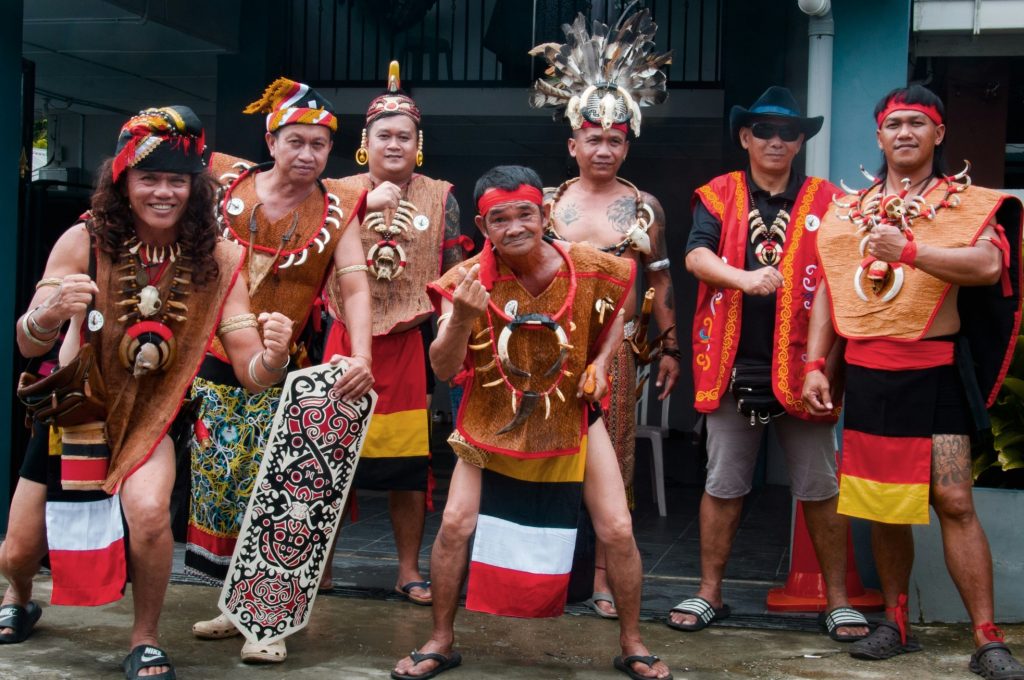
Ever wondered what it feels like to celebrate life every single day? That’s exactly what Malaysia offers. Picture streets glowing with lanterns during Lunar New Year, the air filled with the smell of satay and nasi lemak, and people from different cultures dancing, praying, and sharing food. Malaysia isn’t just a destination—it’s a living, breathing festival. And if you’re planning a trip, the best way to truly experience it is through its celebrations and flavors. Whether you’re searching for a Malaysia trip planner, looking for a Malaysia tour guide, or simply browsing a Malaysia travel itinerary, this blog will help you plan your journey. Think of it as your friendly Malaysia holiday guide, something to show you not only where to go but also how to experience Malaysia the way locals do. So, let’s jump into the world of food, festivals, and culture, and build your perfect Malaysia vacation guide for 2025. Why Choose Malaysia for a Cultural Trip? When people think about traveling in Asia, countries like Thailand and Singapore often come to mind. But Malaysia is like a hidden gem. It’s modern yet traditional, simple yet exciting. You’ll find tall skyscrapers in Kuala Lumpur, quiet beaches in Langkawi, and lush green rainforests in Sabah, all in one country. But the real magic of Malaysia lies in its people and their traditions. Malays, Chinese, Indians, and indigenous groups coexist here, creating a unique blend of cultures. That’s why every festival is celebrated with enthusiasm, and every meal tells a story. If you’re still deciding, let me give you a pro tip: A good Malaysia travel planner will always highlight culture and food as the heart of the journey. And that’s exactly what we’re going to explore today. Why Festivals Are the Heart of Malaysia Festivals in Malaysia are not just events. They are grand celebrations filled with music, colors, dance, and of course, food. Whether you’re traveling with friends, family, or on a romantic getaway in Malaysia, festivals give you memories you’ll never forget. Here are some of the biggest and most meaningful celebrations you should include in your Malaysia trip itinerary: 1. Chinese New Year When? January or February (dates vary) Where? All across Malaysia, especially in Kuala Lumpur and Penang This is one of the biggest festivals in Malaysia. Streets are decorated with red lanterns, dragon dances take over the roads, and families come together to celebrate. As a traveler, you’ll enjoy parades, fireworks, and delicious food like dumplings and sticky rice cakes. If you’re working with a Malaysia trip guide, they’ll likely recommend visiting Petaling Street in KL during this time. 2. Hari Raya Aidilfitri When? After Ramadan (varies by Islamic calendar) Where? Nationwide Hari Raya marks the end of the fasting month of Ramadan. Families wear traditional clothes, houses are decorated, and open houses invite friends and strangers alike. Yes, you can walk into someone’s home, enjoy their food, and be treated like family. Don’t miss traditional Malay dishes like rendang, ketupat (rice cakes), and satay. For food lovers, this festival is a dream come true. A Malaysian travel guide would say: if you want to experience true Malaysian hospitality, this is the best time to visit. 3. Thaipusam When? January or February Where? Batu Caves, Selangor Thaipusam is a Hindu festival that is both spiritual and visually stunning. Thousands of devotees walk barefoot up to the Batu Caves, carrying decorated offerings called “kavadi.” As a traveler, it’s a powerful and unforgettable experience. If your Malaysia vacation guide includes Selangor, make sure you add Thaipusam to your list. 4. Deepavali (Diwali) When? October or November Where? Little India in Kuala Lumpur, Penang Deepavali, the Festival of Lights, is celebrated by the Indian community. Houses glow with oil lamps, temples are beautifully decorated, and you’ll see fireworks lighting up the night sky. Food plays a big role here too, think sweets like ladoos and gulab jamun. A good Malaysia holiday guide will recommend exploring Brickfields (Little India in KL) during this festival. 5. Gawai Dayak When? June Where? Sarawak, Borneo This is a harvest festival celebrated by the indigenous Dayak people. It’s less touristy but gives you an authentic taste of Malaysia’s cultural diversity. There’s traditional dancing, rice wine, and lots of local food. A Malaysia trip planner can help you arrange village homestays during Gawai to truly experience the culture. 6. George Town Festival When? August Where? Penang This arts and culture festival celebrates Penang’s UNESCO World Heritage site with performances, exhibitions, and street shows. It’s perfect for creative travelers who want to see Malaysia’s modern cultural side. Best Festivals in Malaysia 2025 Highlights Festivals in Malaysia are closely tied to food. Every celebration comes with dishes that represent love, prosperity, or tradition. But even outside of festivals, Malaysia is a foodie’s paradise. A good Malaysia travel guide will always highlight the country’s food culture because it’s something every traveler falls in love with. In fact, many tourists say that authentic Malaysian food experiences were the highlight of their trip. Here’s a closer look at Malaysia’s food culture: Street Food in Malaysia: A Flavorful Adventure Street food is the heartbeat of Malaysia. From Penang’s hawker stalls to Kuala Lumpur’s night markets, food is everywhere. Nasi Lemak → Imagine starting your morning in Kuala Lumpur with a paper-wrapped nasi lemak from a roadside stall. The coconut rice is warm, the sambal has the perfect kick, and the city is just waking up. This is breakfast, Malaysian style. Char Kway Teow → The best way to taste this stir-fried noodle dish is in Penang, especially at the Gurney Drive hawker center. You’ll hear the wok tossing, smell the smoky aroma, and taste prawns so fresh they almost melt. Satay → In the evenings, head to Kajang near Kuala Lumpur, known as Malaysia’s “Satay Town.” Grilled meat skewers dipped in peanut sauce taste even better when shared at an open-air stall. Roti Canai → Step into a local “mamak” café, usually open 24/7, and order roti canai
Is Thailand Good for a Workation? Best Places to Work and Play
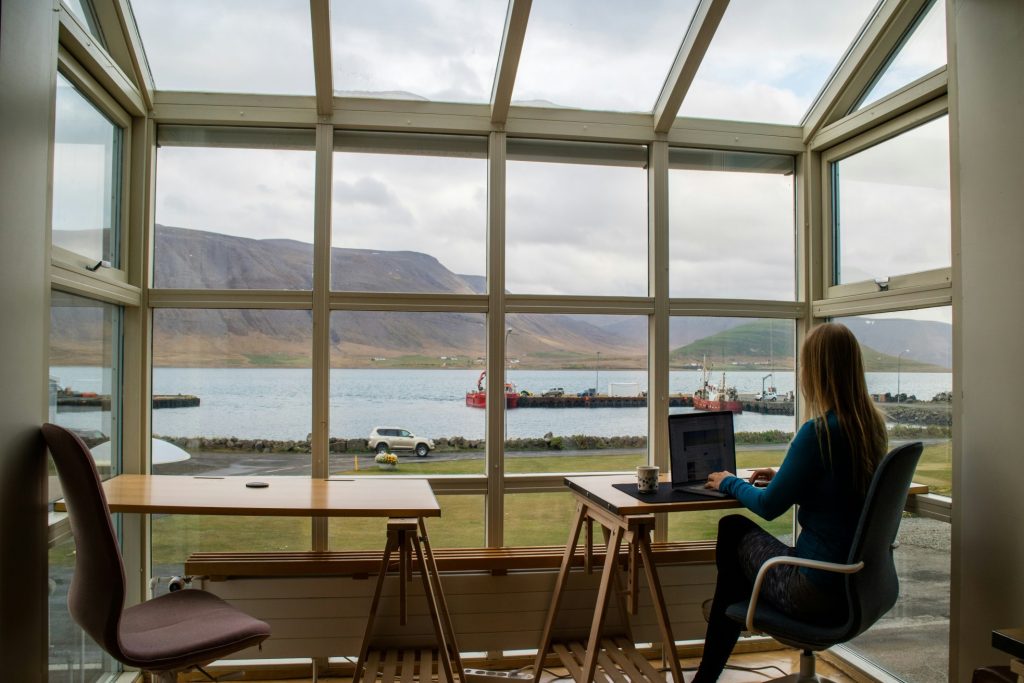
Imagine this: You’re starting your morning with a video call from a rooftop café in Bangkok, pausing at noon to grab spicy noodles from a street food stall, and wrapping up your day with your laptop closed as the sun sinks into the ocean on a Thai beach. That’s not a vacation, it’s a workation in Thailand. And yes, it’s easier than you think. But is Thailand good for a workation? The short answer: Yes! Absolutely. Thailand is one of the best places in Asia for remote workers, digital nomads, and people who want to mix productivity with fun. With its reliable internet, countless coworking spaces, budget-friendly lifestyle, and endless places to explore, Thailand is a dream come true for workation seekers. This Thailand travel guide will show you why the country is a dream spot for both work and play. From bustling coworking hubs in Bangkok to peaceful beaches in Phuket, it’s no wonder Thailand is loved by remote workers and digital nomads worldwide. Whether you’re curious about remote work in Thailand, need a Thailand coworking guide, or simply want tips for creating your own flexible itinerary, this blog has everything you need to start planning your trip Why Choose Thailand for a Workation? A workation isn’t just about finding Wi-Fi. It’s about comfort, cost, lifestyle, and balance. Here’s why Thailand stands out: Affordable Living: Food, transport, and even rent are much cheaper compared to Western countries. Delicious Food: Thai cuisine is world-famous, from Pad Thai to spicy curries. Street food costs just a few dollars and tastes amazing. Great Internet & Coworking Spaces: Thailand is one of the top digital nomad hubs in Asia, with plenty of cafes and coworking spots. Warm Hospitality: The locals are friendly and welcoming, making it easy to feel at home. Diverse Locations: From bustling Bangkok to peaceful islands like Koh Samui, you can choose the vibe that suits you. Visa Options: Thailand offers tourist visas, long-term visas, and even special visas for remote workers. Choosing the Best Cities in Thailand for a Workation When you plan your workation with a Thailand vacation planner or a Thailand trip guide, it’s important to choose the right city. Each city in Thailand offers a different lifestyle. 1. Bangkok – The City That Never Sleeps Why Bangkok? Bangkok is the capital and heart of Thailand. It’s modern, lively, and full of opportunities. The city is great for people who love urban life. Workation Benefits: Countless coworking spaces like The Hive, WeWork, and Hubba. Super-fast internet. Excellent transport system (BTS Skytrain, MRT). Huge variety of cafes and restaurants. Play: When work is done, explore the Grand Palace, Wat Arun, and enjoy rooftop bars with breathtaking skyline views. A good itinerary for Bangkok would include floating markets, street food tours, and a cruise on the Chao Phraya River. 2. Chiang Mai – The Digital Nomad Capital of Asia Why Chiang Mai? Surrounded by mountains and temples, Chiang Mai is peaceful, affordable, and very popular among remote workers. Workation Benefits: Low cost of living. Calm environment with less traffic compared to Bangkok. Dozens of coworking spaces like Punspace and Hub 53. Play: Visit the famous Doi Suthep Temple, explore night markets, and enjoy jungle treks. Chiang Mai is also known for its annual Lantern Festival, which is magical. 3. Phuket – Work with a Beach View Why Phuket? Phuket is Thailand’s largest island and is famous for its beaches, nightlife, and luxury resorts. Workation Benefits: Plenty of beachside cafes and coworking lounges. A good balance of relaxation and entertainment. Great flight connections to Bangkok and international destinations. Play: Spend evenings at Patong Beach, take island-hopping tours to Phi Phi Islands, or relax at Kata and Karon beaches. 4. Koh Samui – Tropical Paradise for Long Stays Why Koh Samui? Koh Samui is a quieter, more peaceful island compared to Phuket, but it still has modern amenities. Workation Benefits: Seaside coworking spaces like BeacHub. Calm atmosphere, perfect for focus. Wellness retreats, yoga, and spas. Play: Relax at Silver Beach, explore Ang Thong Marine Park, or hike to waterfalls like Na Muang. 5. Krabi – Adventure and Nature Combined Why Krabi? If you want a mix of adventure, natural beauty, and beach life, Krabi is perfect. Workation Benefits: Affordable accommodation. Calm and less crowded than Phuket. Cafes and restaurants with great Wi-Fi. Play: Climb the 1,200 steps to Tiger Cave Temple, go kayaking, or explore the famous Railay Beach. Must-Visit Places While on a Workation A good Thailand travel guide isn’t just about work; it’s about the fun too. Here are the must-visit spots for every traveler: Bangkok: Grand Palace, Wat Pho, Chatuchak Market. Chiang Mai: Elephant Nature Park, Doi Inthanon, Night Bazaar. Phuket: Big Buddha, Phi Phi Islands, Bangla Road nightlife. Krabi: Railay Beach, Ao Nang, Four Islands Tour. Koh Samui: Fisherman’s Village, Big Buddha Temple, waterfalls. Pro Tip: Mix work with travel. Plan short weekend getaways to nearby cities or islands using a Thailand vacation guide. Beyond Sightseeing: Experiences to Try Thai Cooking Classes: Learn to make Pad Thai, Tom Yum, or Green Curry. Massage & Wellness: Thai massage is world-famous, affordable and relaxing. Island Hopping: From Phuket or Krabi, visit small, hidden islands. Festivals: Experience Songkran (Thai New Year water festival) or Loi Krathong (Lantern Festival). Adventure Sports: Go scuba diving, snorkeling, rock climbing, or jungle trekking. A Sample Thailand Workation Itinerary (2 Weeks) If you’re new to Thailand, here’s a simple Thailand trip planner for your first workation: Day 1–3: Bangkok – Acclimate, explore temples, and try local food. Work from a coworking space in Sukhumvit. Day 4–7: Chiang Mai – Morning work sessions, evenings exploring temples and markets. Weekend jungle trek or elephant sanctuary visit. Day 8–11: Phuket – Work near the beach, island-hop in free time. Enjoy nightlife in Patong. Day 12–14: Krabi or Koh Samui – Balance work with beach relaxation. Perfect ending to your Thailand workation. This balanced plan ensures productivity and fun while letting you explore
How to Experience Thai Wellness Retreats and Stay Fit While Traveling Thailand
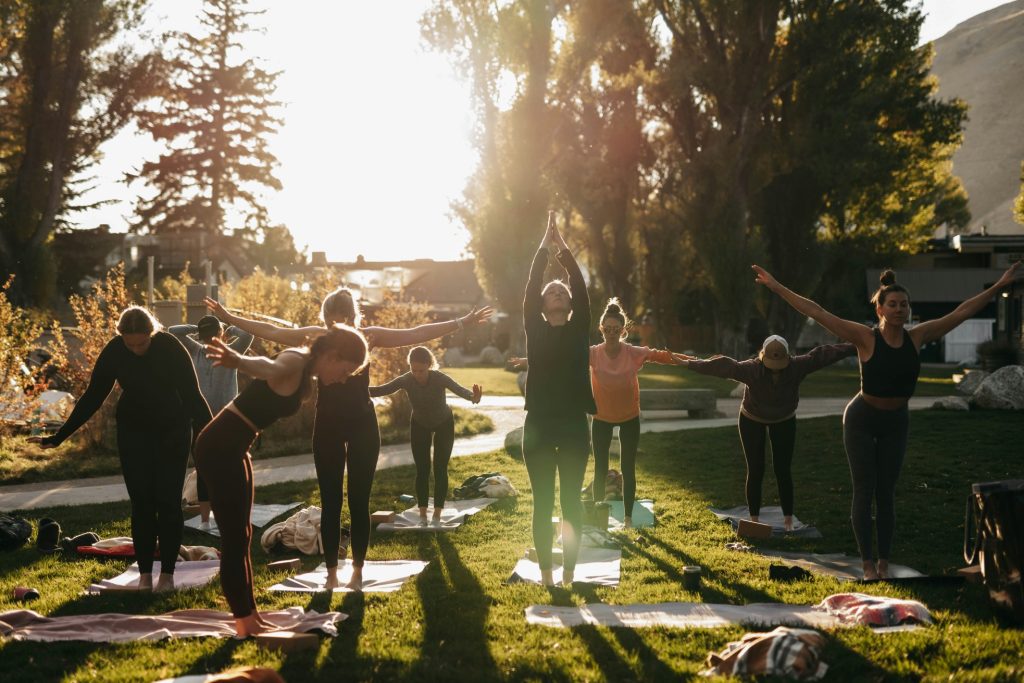
Did you know Thailand is ranked among the top wellness destinations in the world? Instead of returning from a trip tired, imagine coming back healthier, calmer, and more energized—this is what Thailand’s wellness retreats offer. Thailand is not limited to beaches and temples. From yoga retreats to therapeutic spas, it offers healing retreats that balance body, mind, and soul. A more satisfying and healthful vacation is guaranteed when you include wellness activities in your Thailand itinerary. Learn about fitness activities, mindful travel advice, and wellness retreats in Thailand 2025 with this Thailand travel guide. 1. Yoga and Meditation Retreats in Thailand Some of the world’s top yoga centers are located in Thailand. Every day, yoga and meditation retreats are offered in locations like Koh Samui, Phuket, and Chiang Mai. They bring together thorough curricula, knowledgeable instructors, and serene settings. Examples: Visit Wat Suan Mokkh in Chaiya, famous for its 10-day silent meditation retreats, or try Vikasa Yoga in Koh Samui, known for blending traditional yoga with tropical beach vibes. Pro Tip: To get the best deals, especially during the busiest travel times, book your retreat well in advance. 2. Thai Massage and Healing Therapies Without experiencing Thailand’s traditional healing methods, a visit would not be complete. Thai massage combines stretching, assisted yoga, and acupressure. Aromatherapy, herbal compresses, and detoxification procedures are frequently added by wellness resorts. Examples: Try Health Land Spa & Massage in Bangkok or Oasis Spa in Chiang Mai, both highly recommended for authentic Thai massage experiences. Pro Tip: Choose certified spas recommended in trusted Thailand tour guides to ensure authentic experiences. 3. Wellness Resorts and Luxury Retreats Many Thai wellness resorts focus on detox, spa therapy, and mindfulness. Top ones include Chiva-Som in Hua Hin and Kamalaya in Koh Samui. These Thailand detox retreats also offer personal wellness consultations, organic food, and exercise Examples: Consider The Sanctuary Thailand on Koh Phangan for a nature-focused detox retreat or Chiva-Som for luxury wellness services. Pro Tip: Seek out resorts that provide packages specifically designed to meet your health objectives. 4. Fitness Activities Alongside Wellness Don’t overlook outdoor fitness opportunities when planning your trip to Thailand. Stay fit with guided hikes in Chiang Mai, Muay Thai camps, or morning runs in Phuket. These pursuits strike a balance between wellness and adventure. Examples: Explore Doi Suthep-Pui National Park hiking trails near Chiang Mai, train at Tiger Muay Thai camp in Phuket, or run along Patong Beach. Pro Tip: Carry lightweight fitness gear so you can continue workouts even while traveling. 5. Healthy Thai Food and Nutrition Thailand has a varied culinary scene. In addition to street food, there are lots of organic restaurants, detox juice bars, and vegan cafés. Foods like Tom Yum soup and Som Tum (papaya salad) are tasty and nourishing. Examples: Dine at May Kaidee’s Vegetarian Restaurant in Bangkok or visit Detox Delight in Chiang Mai for wholesome, organic meals. Pro Tip: If you have a special diet, make a shortlist of restaurants that serve vegetarian or gluten-free options when organizing your Thailand vacation itinerary. 6. Mindful Travel and Spiritual Experiences In Thailand, spiritual as well as physical well-being are valued. Join silent retreats or practice mindful meditation at Buddhist temples. These encounters help you balance your travel schedule and bring inner peace. Examples: Try meditation sessions at Wat Umong in Chiang Mai, known for its peaceful forest surroundings. Pro Tip: For Offbeat Thailand experiences, dress modestly and learn temple etiquette in advance. 7. Muay Thai Training Camps Muay Thai combines exercise and culture for tourists looking for a distinctive workout. Classes for all skill levels are offered at training camps located in Bangkok, Phuket, and Koh Samui. You learn Thailand’s national sport while getting a great workout. Examples: Train at Sitsongpeenong in Bangkok, Tiger Muay Thai in Phuket, or Lanna Muay Thai in Chiang Mai for authentic and effective camps. These are among the best Muay Thai training camps for beginners. Pro Tip: Before committing to full training programs, beginners should start with short-term courses. 8. Island Detox and Eco-Retreats The peaceful islands of Thailand are ideal for detox getaways. There are eco-resorts on Koh Phangan and Koh Samui that specialize in plant-based diets, digital detoxes, and mindfulness classes. They let tourists get back in touch with nature and unplug from screens. Examples: Stay at Banyan Tree Samui for luxurious detox programs or explore The Sanctuary Thailand on Koh Phangan for eco-conscious wellness. These eco-wellness resorts in Thailand offer sustainable, rejuvenating experiences for mindful travelers. Pro Tip: Check if the retreat includes eco-friendly practices like recycling and solar energy for a more sustainable stay. 9. Hot Springs and Natural Healing Spots Numerous natural hot springs in Thailand promote rest and recovery. The healing mineral waters of Pai, Krabi, and Ranong are well-known. To relax and regain energy after a long, heavy journey, soak in hot springs. Examples: Visit Tha Pai Hot Springs near Pai, Raksawarin Hot Springs in Ranong, or San Kamphaeng Hot Springs near Chiang Mai for therapeutic mineral baths. Pro Tip: Carry a reusable water bottle and hydrate well after hot spring sessions. 10. Evening Wellness Markets and Local Experiences Evening wellness markets are held in certain Thai cities. They sell natural skincare products, herbal teas, organic snacks, and handcrafted wellness items. The wellness scene in Chiang Mai is especially thriving. These marketplaces give your Thailand trip itinerary a more cultural feel. Examples: Explore the Saturday Night Market in Chiang Mai for wellness products and local crafts. Pro Tip: Shop early in the evening when markets are less crowded. FAQs Q1: What is the cost of a wellness retreat in Thailand? Retreats differ greatly. While luxury resorts can cost $500 or more per day, budget options might start at $50. Q2: Is it possible to incorporate sightseeing into wellness retreats? Absolutely, the majority of programs give you free time to visit well-known locations from your Thailand travel itinerary. Q3: Is prior experience required for yoga or meditation retreats? No, retreats welcome beginners and advanced
What Are the Safest Places in Thailand for First-Time Visitors?
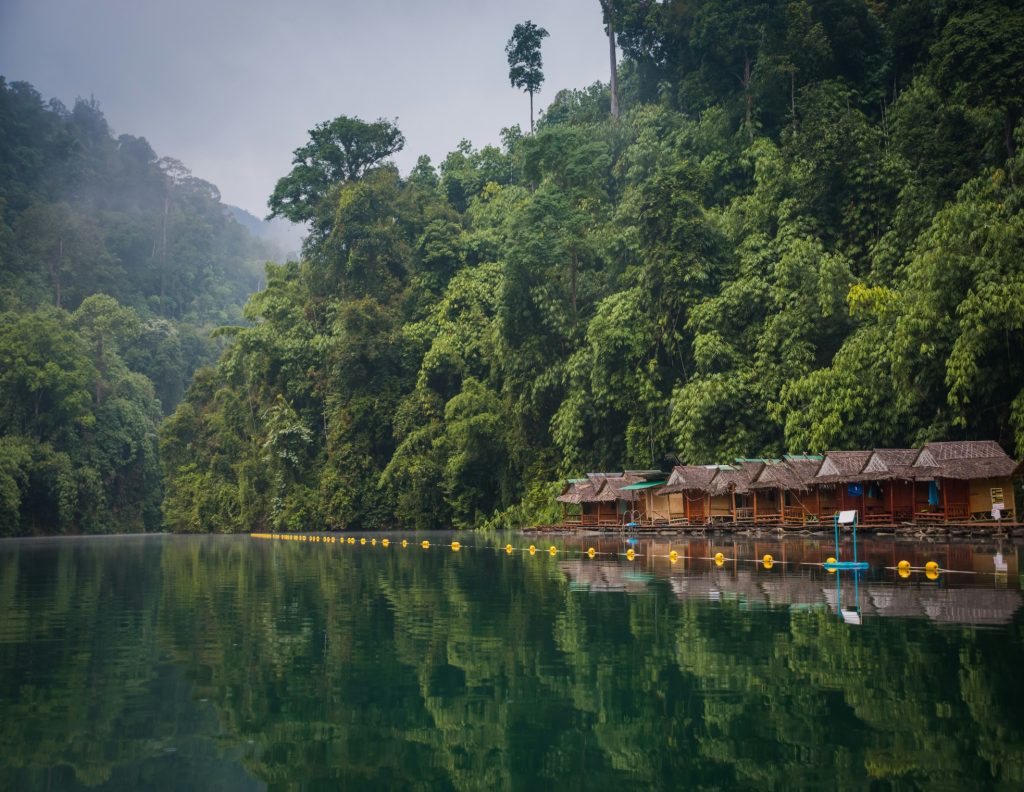
Getting ready to travel to Thailand for the first time? A treat is in store for you. This tropical paradise is famous for its white beaches, lively cities, golden temples, and friendly people. However, amid all the excitement, many first-time travelers often ask: Is Thailand safe for tourists? Absolutely! One of the most popular tourist destinations in Southeast Asia is Thailand. However, some locations provide an even more seamless and secure experience, particularly for first-time tourists. To help you travel wisely and without stress, this Thailand travel planner identifies the safest Places in Thailand for First-Time Visitors. These destinations are not only safe but also picturesque and easy to explore, whether you’re planning a family vacation, a couple’s getaway, or a solo trip. 6 Safest Places in Thailand for First-Time Visitors 1. Bangkok – The Secure Urban Jungle Bangkok, the capital of Thailand, is bustling. Nevertheless, it’s surprisingly safe for tourists, particularly if you limit your travel to well-known locations. Moreover, public transportation is dependable, and the city is well-policed. Most areas of town have 24/7 services, English-speaking residents, and modern hospitals. Cruise the Chao Phraya River, shop at Chatuchak Market, and visit temples like Wat Arun and Wat Phra Kaew. As a result, everything is accessible, and tourist areas are constantly monitored by police and CCTV. Why it’s safe: Excellent infrastructure and security Clearly marked tourist signs and transit-related mobile apps. Violent crime is rare. Pro Tip: Instead of hailing a cab during rush hour, take the BTS Skytrain or the MRT subway. It is safer, faster, and helps you avoid scams and traffic jams. 2. Chiang Mai – Peaceful, Cultural, and Tourist-Friendly Go north to Chiang Mai if you want Offbeat Thailand experiences. It is among the most charming cities in Thailand, known for its low crime rate and traveler-friendly atmosphere. The Old City is walkable and small. The locals are renowned for being peaceful and amiable, and the majority of the attractions are close to one another. For example, you’ll love the nearby elephant sanctuaries, ancient temples, and mountain views. Furthermore, Yi Peng (Lantern Festival), one of the nation’s premier festivals, is held in Chiang Mai. Why it’s safe: Low crime rate, particularly in the Old City A large number of long-term visitors and digital nomads Well-regulated local tours Pro Tip: Always reserve elephant encounters at morally sound establishments such as Elephant Nature Park. Avoid camps that offer rides—they often mistreat animals. 3. Phuket – Beach Bliss With Safety Infrastructure The largest island in Thailand, Phuket, is a popular first-time travel destination often featured in a Thailand first-time travel guide. It has plenty of nightlife, adventure tours, and beach resorts, but it also has the right safety measures in place. The majority of visitors stay in places with lifeguards, tourist police, and clearly marked routes like Patong, Kata, or Kamala. Furthermore, there are many healthcare facilities and English-speaking services, particularly in the vicinity of international clinics and Patong Hospital. Why it’s safe: A strong infrastructure for tourists Emergency support for legal or medical issues Well-guarded beaches and areas for nightlife. Pro Tip: Always keep an eye on your drinks and be vigilant at nightclubs. Only use Grab or registered taxis after dark. 4. Koh Samui – Island Peace with a Local Touch No Thailand first-time travel guide would be complete without Koh Samui.. It provides the ideal harmony of simplicity, luxury, and the natural world. Nevertheless, it is still serene even though it is a popular tourist destination. The roads are in good shape, the resorts are gated and secure, and the locals are friendly. For first-timers, places like Chaweng and Bophut are best. The island offers family-friendly activities, safe beaches, and plenty of water sports, making it one of the best cities in Thailand for tourists. Why it’s safe: A well-established tourism industry with clear signage. A calm nightlife and fewer scams. Coordinated airport and ferry services. Pro Tip: Skip renting a scooter unless you’re confident. Mishaps happen frequently. For quick rides, instead, use a songthaew, a local pickup taxi. 5. Ayutthaya – Historic Tranquility Near Bangkok Do you want to experience Authentic Thai culture away from the crowds? Bangkok is just 90 minutes away from Ayutthaya, a UNESCO World Heritage site. You can explore peaceful parks, riverbank temples, and historic ruins here. Therefore, it’s flat, safe, and enjoyable; most tourists rent bikes to explore. Ayutthaya has a lower crime rate than large cities. It’s well-liked by photographers and day trippers who appreciate the tranquil atmosphere. This spot often features in recommendations for safe places to visit in Thailand. Why it’s safe: Low population density Lack of tourist scams Open spaces and welcoming locals Pro Tip: Choose to go early in the morning or late in the afternoon. The crowds are smaller and the light is perfect for photography. 6. Hua Hin – Royal Elegance and Relaxed Vibes If you’re searching for a serene beach getaway, Hua Hin ought to be, particularly on your travel itinerary. This seaside city, which was once a royal retreat, is still elegant and serene. The atmosphere is laid back, and the beaches are clean. Its secure and leisurely lifestyle, favored by many retirees and expats, makes it one of the best cities in Thailand for tourists. It’s also easy to reach by train or bus from Bangkok. Why it’s safe: Quiet streets and little chaos at night. Well-liked by families and senior citizens. Vigorous police presence in tourist destinations. Pro Tip: Enjoy a sunset evening at Cicada Market, which offers fantastic local cuisine, live music, and artwork in a completely secure setting. Frequently Asked Questions Q1. Is Thailand safe for solo female travelers? Absolutely! Especially in spots like Chiang Mai and Hua Hin. However, just dress modestly and avoid walking alone late at night. Q2. Do I need a permit to visit certain areas? Yes, some areas in Thailand like national parks, marine parks, or border zones, may require a permit. Check local rules before visiting. Q3. Can
Best Leh Ladakh Itinerary for First-Time Visitors (2025)
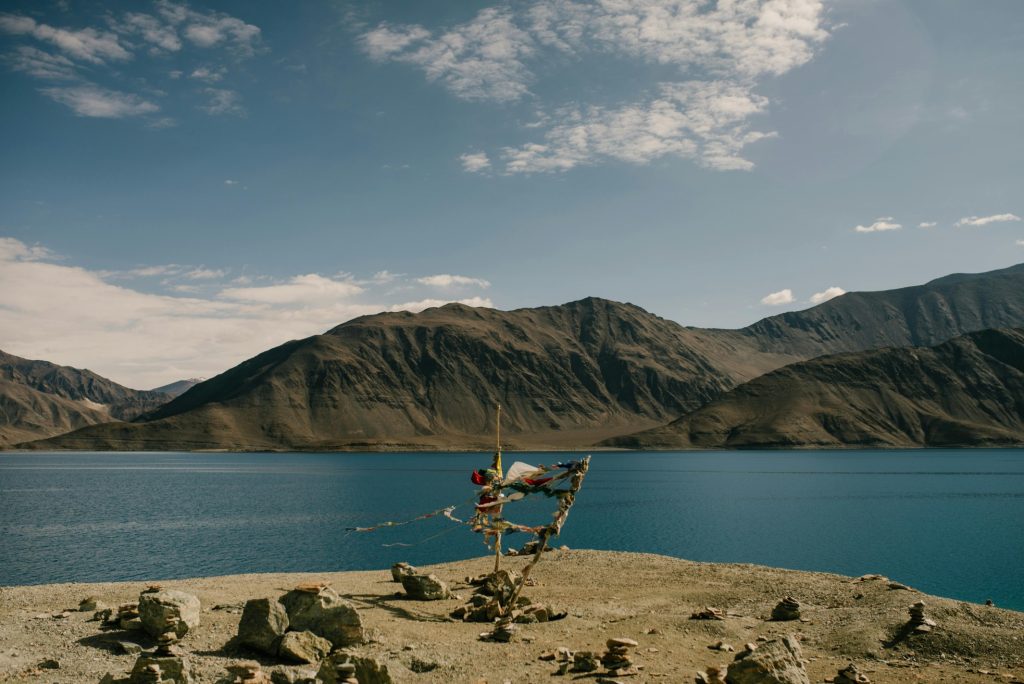
If you’re gearing up for your first-ever journey to Leh Ladakh, get ready for an unforgettable adventure. From exploring snow-capped peaks, high-altitude deserts, turquoise lakes, to old monasteries, it holds lifelong memories. Whether you’re dreaming of a wholesome Ladakh road trip or planning trekking, this Ladakh travel guide will help you. All in all, create the perfect Ladakh trip itinerary for 2025 as per your own preference. Choosing the Best Route to Ladakh: Our Top Recommendations The journey to Ladakh isn’t just a simple journey. In fact, it is as breathtaking as the destination itself. There are three primary routes to Leh, depending on your time constraints, preferred mode of transportation, and comfort: Manali to Leh Route: It is well-known for Rohtang Pass, Baralacha La, and Sarchu. Consequently, it is particularly suitable for thrill-seekers and those seeking a gradual ascent in elevation. Srinagar to Leh: The scenic drive from Srinagar to Leh passes through Sonamarg, Zoji La, and the ancient town of Kargil. Therefore, travelers looking for a comfortable ascent with fewer difficulties due to altitude will find it ideal. Flying to Leh: This is the fastest way to reach Ladakh and provides breathtaking Himalayan views. However, to prevent altitude sickness, it is imperative to acclimate as soon as possible after arrival. Our Recommendation for First-Time Visitors: If you’re visiting Ladakh for the first time, we recommend taking the Srinagar to Leh route by road. It not only provides a more comfortable and gradual altitude gain, but also lets you soak in the diverse beauty of Kashmir and Ladakh along the way. This helps your body adjust better and makes the journey smoother and more enjoyable—especially for beginners. Pro Tip: Additionally, take a different route on the way back and on the way out for diverse landscape’s beauty. Must-Visit Places in Leh Ladakh A first-timer’s Ladakh trip plan should strike a balance between the famous landmarks and the hidden gems. As a result, that is what makes your journey unforgettable. For instance, here are some must-see spots, each with unique charm and beauty: Pangong Tso: Throughout the day, the famous high-altitude lake’s hues shift from deep blue to emerald green. Moreover, spend the night in a camp by the lake to see the stunning sunrise over its glistening waters. Nubra Valley: A chilly desert surrounded by snow-capped mountains, this region is home to the rare double-humped Bactrian camels. Khardung La Pass: One of the world’s highest motorable roads, at over 17,500 feet. Consequently, it provides breathtaking views of the Karakoram and Zanskar ranges. Tso Moriri: A more sedate option to Pangong. In particular, this unusual lake is haven for birdwatchers, drawing uncommon species like bar-headed goose and black-necked crane. Thiksey & Hemis Monasteries: Beyond their religious significance, Thiksey and Hemis Monasteries are home to priceless Buddhist relics, historic murals, and lively festivals. Magnetic Hill: A fun and perplexing stop for any road tripper. Interestingly, this natural optical illusion makes your car seem to roll uphill on its own. Pro Tip: To prevent altitude sickness, begin your trip by taking in the sights of Leh before proceeding to higher elevations. Experiencing Ladakh Beyond Sightseeing An itinerary for Ladakh is more about embracing local culture and adventure than checking off ideal landmarks. Here are some meaningful and unforgettable things to do in Ladakh that will elevate your travel experience: Trekking in Ladakh: Stok Kangri, Markha Valley, and Sham Valley are well-traveled routes. River Rafting in Zanskar: An exhilarating way to witness the breathtaking gorges of Ladakh. Camping by High-Altitude Lakes: Ladakh offers unparalleled stargazing. Cultural Immersion: Take in traditional music and dance at a local celebration such as Hemis Tsechu. Pro Tip: To prevent last-minute disappointment, schedule activities in advance especially during the busiest Ladakh holidays (June–September). Crafting the Perfect Ladakh Travel Itinerary An ideal Ladakh tour schedule for first-time visitors strikes a balance between exploration, relaxation, and travel. Here’s a suggested Ladakh travel itinerary for first-timers that ensures you make the most of your journey without feeling rushed: Arrival and Acclimatization: To begin with, explore Leh Palace and Shanti Stupa during your first few days there. High-Altitude Excursions: Next, visit to Nubra, Pangong, or Tso Moriri for breathtaking Himalayan views and life-changing experiences. Cultural & Adventure Activities: Take part in trekking, rafting, or camel rides at Hunder Sand Dunes. In addition, visit monasteries like Hemis, Thiksey, and Diskit. Buffer Days: Lastly, add one or two extra days to your itinerary to account for unforeseen road conditions or weather. Pro Tip: Avoid cramming too many destinations because the real Ladakh’s beauty is best experienced at a slower pace. Travel Essentials for a Smooth Ladakh Trip The difficulties of traveling at high altitudes are frequently underestimated by first-time visitors. Therefore, before packing your bags, keep these essentials in mind: Packing: Sunscreen, sunglasses, sturdy trekking shoes, and layers of clothing. Health Precautions: Also, get acclimated, drink plenty of water, and bring some basic altitude sickness medication. Best Time to Visit: May to September for road trips; January to February for winter treks. Pro Tip: Since many places lack network coverage, download maps offline in advance. Inner Line Permits are needed for places like Nubra, Pangong, and Tso Moriri. FAQs Q1: How long should be my first Ladakh trip? 7–10 days is ideal for a comfortable pace. Q2: Is it safe to have a solo trip in Ladakh? Yes, certainly for solo travelers, it is indeed secure and well-connected. Q3: Is it possible to visit Ladakh during the winter season? Yes, but expect severe cold and restricted access. Q4: How much should a first trip to Ladakh typically cost? Depending on your mode of transportation, lodging, and season, it can cost anywhere between ₹15,000 and ₹35,000. Final Thoughts If planned smartly, then your Leh Ladakh trip will come out to be a once-in-a-lifetime experience. Every area of Ladakh offers something new to discover, from tranquil lakes like Pangong and Tso Moriri to Khardung La. Moreover, respect the area’s delicate ecology and take your time
How to Plan a Budget Thailand Trip That Feels Luxurious
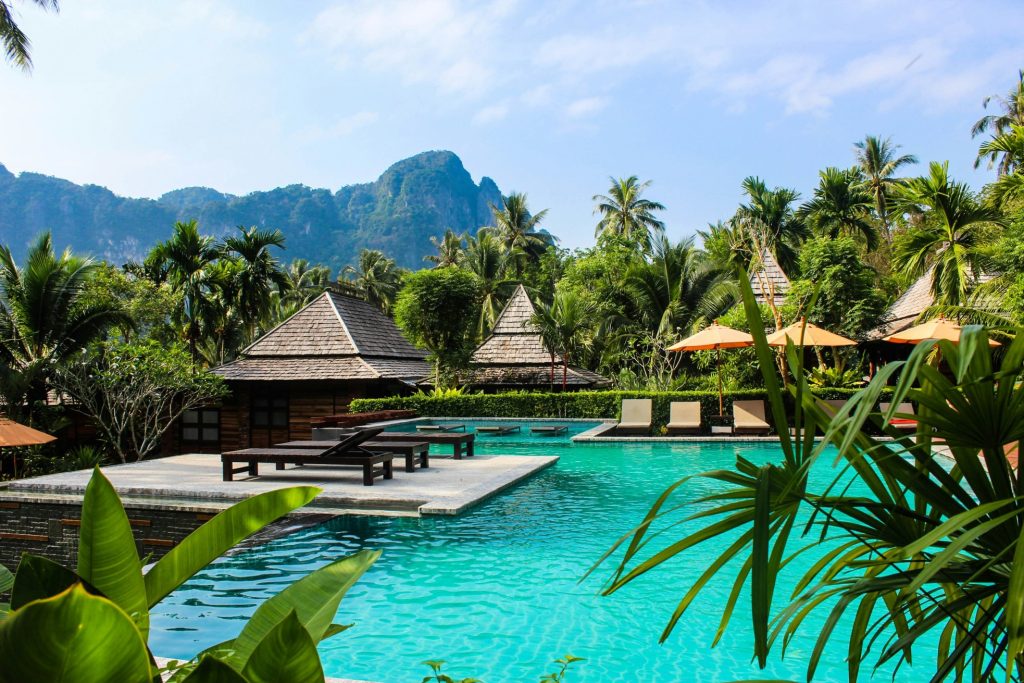
Are you planning for a budget-friendly trip to Thailand? You don’t need a luxury budget to enjoy luxury experiences in Thailand. In fact, with some smart planning, you can fully enjoy beachfront stays and cultural treasures. This personalised Thailand travel planner lays out an itinerary filled with practical tips, regional highlights for different travel styles. Perfect 10-Day Travel Itinerary On a Budget Day 1–2: Touchdown in Bangkok – Urban Adventures & Skyline Views Start your beautiful journey in Bangkok. It is Thailand’s lively capital that blends tradition with modernity. Additionally, the city has many more things to explore & experience, from A1 stylish rooftop bars to floating markets. Highlights: Here are the go-to places to start your vacation Visit Wat Arun and the Grand Palace for a glimpse at Thailand’s spiritual and royal history. Check out the busy Chatuchak Market or take a boat to the Amphawa Floating Market. Enjoy a sunset drink at Octave Rooftop Bar or Vertigo, both known for their stunning views. For Travel Personalities: Solo Travelers: Take a food tour through Chinatown. Romantic Duo: Go on a sunset boat cruise on the Chao Phraya River. Culture Buffs: Visit the Jim Thompson House Museum. Pro Tip: Moreover, stay in boutique hotels near Sukhumvit or Silom. They offer city views and stylish interiors at a lower cost than major hotel chains. Day 3–4: Chiang Mai – Temples, Treks, and Tranquility Next, fly from the north to Chiang Mai. It is a historic city surrounded by beautiful mountains and filled with ancient temples. Highlights: Here’s what not to miss in Chiang Mai: Visit Doi Suthep Temple for a spiritual morning with great views of the city. Attend a traditional Lanna cooking class or take a bamboo raft ride through the countryside. Walk around the Old Town with its charming cafes and night markets. For Travel Personalities: Wellness Seekers: Join a yoga retreat or herbal sauna session. Digital Nomads: Work from a café with mountain views in Nimmanhaemin. Adventure Lovers: Trek to the Sticky Waterfalls (Bua Tong). Pro Tip: During your travel, download Grab to avoid haggling with tuk-tuk drivers and ensure safer rides. Day 5–6: Krabi & Ao Nang – Beach Vibes Without the Price Tag Then, for a change of scenery, travel to southern Thailand. The Railay Peninsula and some of Thailand’s most stunning beaches are accessible from Ao Nang in Krabi province. Highlights: These are some must-do activities in Krabi: Take a long-tail boat to Phra Nang Beach or Tonsai. Watch the sun set into the sea at Ao Nang’s beach promenade. Visit the Emerald Pool and Hot Springs Waterfall in the nearby jungle. For Travel Personalities: Couples: Railay’s cave beach is ideal for private moments. Budget Travelers: Stay in local guesthouses in Krabi Town and use it as your base. Island Hoppers: Book a day trip to Phi Phi Islands or Hong Islands. Pro Tip: Visit Railay before noon to avoid the crowds. And remember to bring water shoes since the rocks can be slippery! Day 7–8: Koh Yao Noi – Offbeat Island Luxury Afterward, swap crowded islands for the tranquil island of Koh Yao Noi, which lies between Krabi and Phuket. It provides quiet beaches away from the nightlife and boutique eco-resorts with barefoot luxury. Highlights: While you’re on the island, consider these highlights: Rent a bike to explore rubber plantations and quiet fishing villages. Enjoy a sunrise paddleboarding session or kayak through mangroves. Treat yourself to a Thai massage at a beachfront spa while sipping coconut water. For Travel Personalities: Slow Travelers: This spot is perfect for digital detox and mindfulness trips. Eco-tourists: Choose from many eco-friendly accommodations and farm-to-table restaurants. Pro Tip: Skip the taxis on the island. Instead, renting a motorbike is the most convenient and cheapest way to get around. Day 9–10: Return to Bangkok – Shop, Sip, and Say Goodbye Finally, with a lighter, soothing & relaxing schedule, end your trip back in Bangkok. Highlights: Here’s how to spend your last days in Bangkok Shop: Shop for handmade crafts in Siam Square or explore hidden cafes in Ari. Sip: Try boat noodles at Victory Monument, a local favorite go-to experience. Unwind: Unwind at Thailand’s luxurious cinemas, where reclining seats and food service are standard. Pro Tip: Use your last day to get a herbal compress massage before your flight. It’s a great way to relieve jet lag. FAQs: Q1: Can it be possible to have a luxury experience on a tight budget in Thailand? A: 100%, it is possible! With smart & affordable choices like boutique stays, happy hour splurges, and choosing lesser-known islands, you’ll get the luxury experience in Thailand on a tight budget. That’s what the real beauty of Thailand. Q2: When exactly is the best preferable time to plan a budget-friendly Thailand trip that still feels luxe? A: The Best time to hit up Thailand is the shoulder seasons, March to May or September to November. Prices get dropped, crowds thin out, and the vibes? Immaculate. This hack is followed by Thailand trip planner for a better experience on a limited budget. Q3: Do I need a Thailand tour guide, or can I just DIY the whole thing? A: Honestly, you can totally plan your own adventure to go solo. Google Maps, TikTok inspo, and apps like Grab and Klook make it super easy. Q4: What are some unique offbeat hidden spots in Thailand that feel luxurious? A: Skip the usual and check out Koh Yao Noi, Pai, or Ao Nang. These places are stunning, quiet, and give you rich royal vibes without rich prices. Q5: How much should I budget for a 10-day trip in Thailand that still feels upscale? A: Around ₹60K–₹80K can get you pretty far experience with boutique stays, intercity flights, and a few luxe splurges. Q6: Is Bangkok worth staying in, or should I just fly through? A: Yes, it is worth staying. Bangkok has rooftop bars, floating markets, trendy cafes, and coolest boutique hotels on a budget to experience. Final
Best Volunteering Opportunities in Thailand in 2025
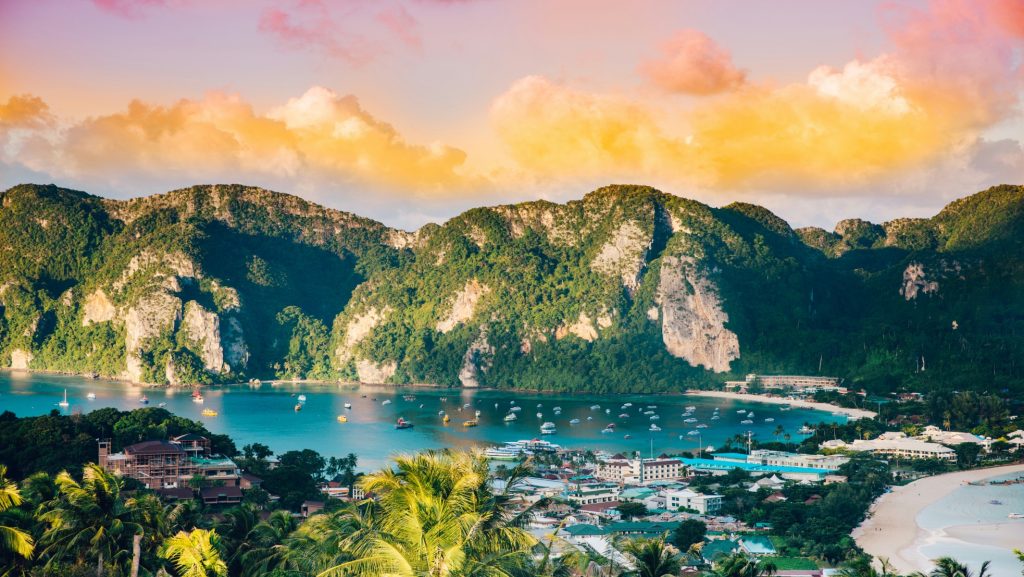
Introduction – Why Thailand is a Volunteer’s Paradise in 2025 When most people think of Thailand, they picture turquoise waters, golden temples, and street food so good you’d happily miss your flight just to have one more plate of pad kra pao. But there’s another side to Thailand — one that’s less about taking Instagram-perfect pictures and more about leaving a meaningful footprint. In 2025, volunteering in Thailand has become one of the most rewarding ways to travel. From caring for rescued elephants in Chiang Mai to protecting coral reefs in Koh Tao, you’ll find opportunities that let you give back while immersing yourself in the country’s vibrant culture. And let’s be honest — in a world where travel is often about ticking off landmarks, there’s something deeply fulfilling about spending your days teaching English to enthusiastic students or planting trees in the lush northern hills. Why Volunteer in Thailand in 2025? Cultural Exchange: Volunteering puts you in direct contact with local communities. You don’t just visit Thailand — you become part of it. Affordability: Living costs remain low compared to many other countries, making longer stays possible. Variety of Projects: Whether you’re into wildlife conservation, education, healthcare, or sustainable farming, Thailand has it all. Natural Beauty: Your volunteer location might be in the mountains, by the beach, or even on a small tropical island. Strong NGO Network: Thailand has an established volunteering infrastructure, with plenty of ethical, well-managed programs. Top Volunteering Opportunities in Thailand (2025) Here are some of the best programs to consider this year, each offering a unique way to make a difference. 1. Elephant Sanctuary Volunteering – Chiang Mai What you’ll do: Feed, bathe, and care for rescued elephants; help prepare their food; assist in veterinary care. Why it matters: Many elephants in Thailand have been rescued from logging or tourist riding industries. Ethical sanctuaries focus on rehabilitation and care. Best time: November to February (cooler season). 2. Marine Conservation – Koh Tao What you’ll do: Conduct coral reef surveys, remove ghost nets, and assist with underwater clean-ups. Some programs include PADI diving certification. Why it matters: Thailand’s marine biodiversity faces threats from tourism, pollution, and climate change. Best time: March to September (clear waters). 3. Teaching English in Rural Schools – Isaan Region What you’ll do: Help students practice conversational English, create engaging lesson plans, and introduce cultural exchange activities. Why it matters: English skills can open up future job opportunities for students in rural Thailand. Best time: May to September (Thai school year). 4. Community Development – Chiang Rai What you’ll do: Build homes, install clean water systems, and run hygiene awareness workshops. Why it matters: Many hill tribe communities live in remote areas with limited infrastructure. Best time: November to February (dry season). 5. Sea Turtle Conservation – Phang Nga & Phuket What you’ll do: Patrol beaches, assist in hatcheries, and release young turtles into the ocean. Why it matters: Protects endangered species and maintains coastal ecosystems. Best time: November to March (nesting season). 6. Healthcare Volunteering – Bangkok & Northern Thailand What you’ll do: Assist in free medical camps, public health education, and basic check-ups. Why it matters: Provides vital services in underserved areas. Best time: Year-round. 7. Wildlife Rescue & Rehabilitation – Lopburi What you’ll do: Care for rescued monkeys, birds, and reptiles; help with feeding schedules and habitat cleaning. Why it matters: Many animals are saved from the illegal pet trade or unsafe environments. Best time: Year-round. 8. Sustainable Farming – Pai What you’ll do: Learn organic farming methods, help with planting and harvesting, and build eco-friendly systems like compost toilets. Why it matters: Encourages sustainable living and supports local farmers. Best time: November to February (pleasant weather). Things to Know Before You Volunteer in Thailand Visa Requirements: Many volunteers use a tourist visa for short programs, but for long-term stays, a special volunteer visa may be required. Budget: Expect $20–40/day for living costs (outside of program fees). Choosing Ethical Projects: Avoid any that involve animal exploitation, especially elephant riding or unnatural performances. Cultural Etiquette: Dress modestly, respect elders, and learn basic Thai phrases. Sample 5-Day Volunteer Itinerary – Chiang Mai & Beyond This itinerary blends wildlife care, community work, and cultural exploration for a wholesome volunteering experience. Day 1 – Arrival & Orientation Arrive in Chiang Mai and settle into volunteer accommodation. Afternoon orientation with your program coordinator. Learn about project goals, cultural do’s and don’ts, and safety guidelines. Evening: Explore the Chiang Mai Night Bazaar — try khao soi (northern Thai curry noodles) and mango sticky rice. Day 2 – Elephant Sanctuary Experience Morning: Travel to the sanctuary. Start the day by preparing elephant food (banana balls, sugarcane). Midday: Walk alongside elephants in the forest, observing their natural behavior. Afternoon: Help with mud baths and river bathing. Evening: Return to Chiang Mai. Free time for a local massage or temple stroll. Day 3 – Community School Visit Morning: Head to a local rural school. Conduct fun English lessons through games and songs. Afternoon: Assist teachers in arts, crafts, or sports activities. Evening: Join a cooking class to learn authentic Thai dishes from locals. Day 4 – Cultural Immersion & Hill Tribe Support Morning: Travel to a nearby hill tribe village. Participate in a community-building project (e.g., water filtration system). Afternoon: Learn traditional weaving or bamboo craft from villagers. Evening: Share a communal dinner with the community, listening to local music. Day 5 – Farewell & Exploration Morning: Final volunteer duties — help with morning feedings at the sanctuary or community clean-up. Afternoon: Visit Doi Suthep Temple for panoramic views over Chiang Mai. Evening: Departure or continue your travels in Thailand. Tips for Making the Most of Your Volunteer Experience Be Open-Minded: Things won’t always go as planned — embrace the unpredictability. Learn Thai Phrases: Even simple greetings (like “Sawasdee ka/krub”) go a long way. Document Your Journey: Photos, journals, or short videos can inspire others to volunteer. Stay Longer if Possible: The longer you stay, the more
What to Pack for Ladakh: Summer vs Winter Essentials
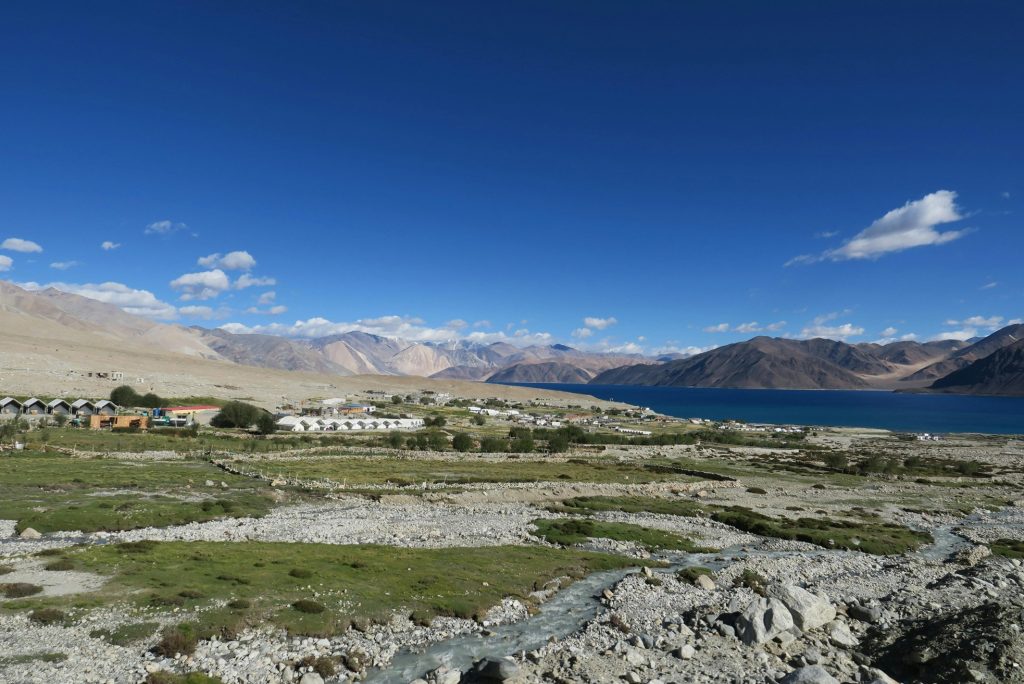
Ladakh is considered to be one of those rarest places where the weather changes within minutes from bright sunshine one moment to snow flurries the next. From serene monastery stays to rugged high-altitude treks, here every journey demands careful & essential packing. But the main catch is what you pack should depend on how you’re travelling, not just only depends on the season you’re travelling in. Are you crossing high passes on a road trip, trekking across glaciers, or soaking in the cultural beauty of remote villages? This Ladakh travel guide will help you pack smartly, based on your travel style, for both summer (May–September) and winter (October–March). Ultimate Packing Tips For All Travellers 1. The Adventure Seeker If your Ladakh trip involves challenging terrains and high-altitude trekking routes, you’ll need to prioritise performance gear over casual comfort. Summer Essentials (May–September) Layered clothing: breathable T-shirts, full-sleeve thermals, fleece jacket, lightweight down jacket. Comfortable trekking pants for both trails and sightseeing. UV sunglasses and sunscreen (SPF 30+) — essential due to high-altitude sun exposure. Sturdy hiking shoes with ankle support. Hat or scarf for sun and dust protection. Reusable water bottle for staying hydrated. Winter Essentials (October–March) Heavy thermals (top & bottom). High-fill down jacket (windproof and waterproof). Woollen sweaters and fleece mid-layers. Insulated waterproof boots with thick wool socks. Gloves, beanie, and neck warmer. Snow goggles to reduce glare from snow. Pro Tip: Oxygen levels are significantly lower here. Avoid heavy exertion in the first two days to help your body acclimatise before starting any intense trek. 2. The picturesque road-tripper A road trip across Ladakh will take you through a variety of landscapes, from the turquoise expanse of Pangong Tso to the arid heights of Khardung La. Rapid weather changes and isolated areas with few amenities are things you’ll need to be ready for. Packing Essentials Comfortable travel pants and lightweight jackets for effortless mobility; apparel tailored for different elevations. GPS devices or offline maps — network coverage is erratic. Extra power banks, a car charger, and long-distance fuel cans. Snacks such as chocolates, protein bars, or dried fruits. An altitude sickness medication kit and first aid supplies. Pro Tip: Always have cash on hand because there aren’t many working ATMs in the small villages along the route. 3. The Cultural Explorer Ladakh isn’t just about its landscapes, it’s a cultural mosaic of ancient monasteries, centuries-old traditions and vibrant markets. If your Ladakh tour itinerary is built around cultural experiences, pack with respect and comfort in mind. Packing Essentials Modest clothing that fully covers shoulders and knees for monastery visits. Light woollen layers for early mornings and evenings. Comfortable walking shoes or sandals for sightseeing. A small scarf or shawl for temple etiquette. Camera with extra batteries for photography, as cold weather drains them quickly. Pro Tip: When visiting monasteries, avoid pointing your feet towards sacred idols, and always walk clockwise around prayer wheels. 4. The Offbeat Traveller If your idea of Ladakh holidays is venturing far from the usual Leh Ladakh travel guide, you’ll need to pack for self-sufficiency. Packing Essentials Water purification tablets or portable filter. Multipurpose clothing — lightweight but warm. Sleeping bag (sub-zero rated) if staying in basic homestays. Headlamp or torch with spare batteries. Lightweight cooking gear if camping. Pro Tip: Carry eco-friendly toiletries and avoid single-use plastics because remote villages have limited waste disposal systems. Year-Round Must-Haves Medicines & First-Aid Kit (including altitude sickness tablets). Power bank + extra batteries. Permits, ID cards, and passport copies. Dry snacks for long journeys. Waterproof backpack or rain cover. Pro Tip: Always store your electronics and important documents in waterproof pouches, sudden changes in the weather are common. FAQs Q1: What is the foremost essential thing to pack for a Ladakh trip? A: Layers. No matter what the season is, the weather can flip real quick, its totally unpredictable. So pack thermal wear, a good jacket, and solid shoes. If you’re heading for trekking in Ladakh or a Leh Ladakh road trip, even your phone charger should come with a backup, as it becomes mandatory! Q2: Do I need warm clothes even in summer in Ladakh? A: Yes! Ladakh summers may look sunny, but nights and early mornings are cold, especially if your Ladakh itinerary includes high-altitude places like Pangong or Nubra Valley. Q3: What kind of shoes should I carry for a Ladakh adventure tour? A: Go for waterproof hiking or trekking shoes with ankle support. Even if you’re not trekking, the terrain is rocky and uneven. Comfort should always be in priority over fashion. Q4: Is a down jacket necessary for Ladakh in winter? A: 100% yes, no compromise in it. If you’re visiting between October and March, especially for the Chadar trek or snow-covered sightseeing, a heavy down jacket is a must. Q5: Should I rent or buy winter gear in Ladakh instead of buying? A: Totally go for renting, if you’re on a short Leh Ladakh trip and don’t want to invest in heavy winter gear. Leh has shops that rent out jackets, gloves, boots, and trekking gear. Q6: What should I pack for a Ladakh road trip itinerary with multiple stops? A: Try to pack in layers, keep a small daypack for essentials, and make sure you have a basic first-aid kit and extra snacks. You’ll often be in areas without shops for miles, so make sure to keep all the basic essentials, be it first aid kit to power backup. Final Thoughts As much as it is about improving your experience, packing for Ladakh is about being ready for the weather. Whether you’re organizing a road trip through Leh Ladakh, trekking across glaciers, or living in a monastery, the correct equipment can make your trip more enjoyable and memorable. We at The Tarzan Way create Ladakh tour package that suit your travel preferences, from trekking routes full of adventure to trips rich in culture, and we assist you with all the preparations you need. We make sure you are



